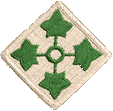
GUILD OF LINGUISTS - LESSON 4

Changing the tense of verbs with prefixes.
You probably remember that the actor is indicated by a certain suffix to the verb. This idea is used also in most other features of D'ni grammar. So, for the indication of tenses, prefixes are used. The 'standard tense', action takes place now, has no prefix. that means our example 'glo' means 'I start', as you learned in lesson 2. If you want to say now 'I started (yesterday, e.g.)' you need past tense which is formed by adding the prefix 'kodo-', it would be 'kodoglo'. Seev the complete list of tense prefixes in the following table:
Simple present no prefix I start glo Present progressive do- I am starting doglo Simple past ko- I started koglo Past progressive kodo- I was starting kodoglo Perfect leh- I have started lehglo Past perfect kol- I had started kolglo Future bo- I will start boglo Future progressive bodo- I will be starting bodoglo Future perfect boko- I will have started bokoglo Future perfect progressive bodol- I will have been starting bodolglo !Special form: The imperative.
The imperative, used in commands etc., is indicated by a suffix because it is neither a tense definition nor an actor definition. The suffix is '-ah' (one D'ni letter!). This suffix is added after the normal suffix for the person. 'You start' is 'gloehm', so the command 'start!' would be 'gloehmah' if you're talking to a single person and 'gloteeah' if you're talking to more than one person. (This section has been updated.)The plural of nouns.
What would you expect to make a noun plural? Right, a prefix or suffix. This time it is a suffix (because noun prefixes are reserved for articles!): '-tee'. These two D'ni letters are also the indicator for 2nd person pl. when attached to verbs. The rules with articles stay exactly the same, so that we can give an
Example: books = kortee; the books = rehkortee. (ehrthkortee won't make sense.)Nouns with an indefinite article (a/an)
Since it is a strict rule not to use any noun without an article (except for special reasons), we need the other article. This article, corresponding to English 'a/an', is 'ehrth-'. It is used as a prefix to the noun like the definite article 'reh-'. If ehrth- is put in front of a plural form, it means "some".
Example: book = kor; the book = rehkor; a book = ehrthkor; some books = ehrthkortee.Adverbs.
If an adjective defines a verb (to create safely) it must be changed into adverb by appending '-sh'. 'He creates safely' would be 'mahrnehn soygihsh'.The possessive.
Possession is a bit difficult chapter. Personal possession, if someone owns an object, is indicated by the little word 'oykh'. Its use is not always clear. We know for sure that it is used similar to English 'of', but sometimes it is prefixed or suffixed to a word or written 'ok' or 'okh'. Then, there is the word "t'", which has also other meanings and is used for a non-personal "of". And there is "tso", also non-personal, that marks a possesion of charactreristics. Look at the functions with this (a bit stupid) examples:
Gehn's book = rehkorokh Gehn
one of the group = fah t' rehtehs (fah=one, thes=group)
the tunnel of the books = rehbihshtah tso rehkortee.
This is the most common form in the known D'ni texts.A general note to prefixes.
If a prefix/word compination is not well to pronounce, an "eh" may be inserted between the prefix and the verb:
Example: kahg + sh would be kahgsh and changes into khagehsh.Summary
- The infinitive is also used for the first person present tense.
- Other tenses can be achieved by using certain prefixes to a verb.
- The imperative is form by appending '-ah'.
- The indefinite article is "ehrth-", used as a prefix to the noun.
- Plural of nouns is indicated by the suffix '-tee'.
- Adjectives become adverbs by adding '-sh'.
- Possession is shown by 'oykh', the D'ni 'of'.
You know pretty much about the D'ni language now. Instead of more words, here is a short text. Try to translate it. If you have serious problems with grammar, you should better repeat this lesson and lesson 2. If you still don't feel sure or have any other questions, feel free to send me e-mail. If you can read the text, check yourself with the original translation. Then you're ready for lesson 5.
Lihsho kehnehn ehrth nahvah. kholonehn rehgahlpo okh ehrthboogin prihn. bochoylahnayehn kehrash rehsehvtee.